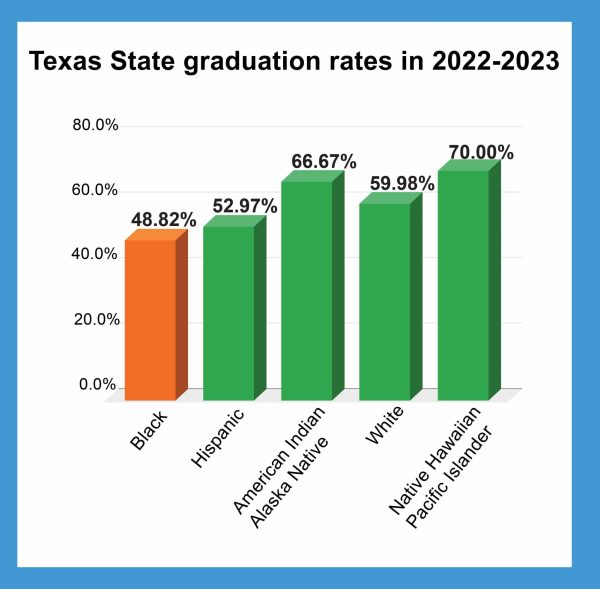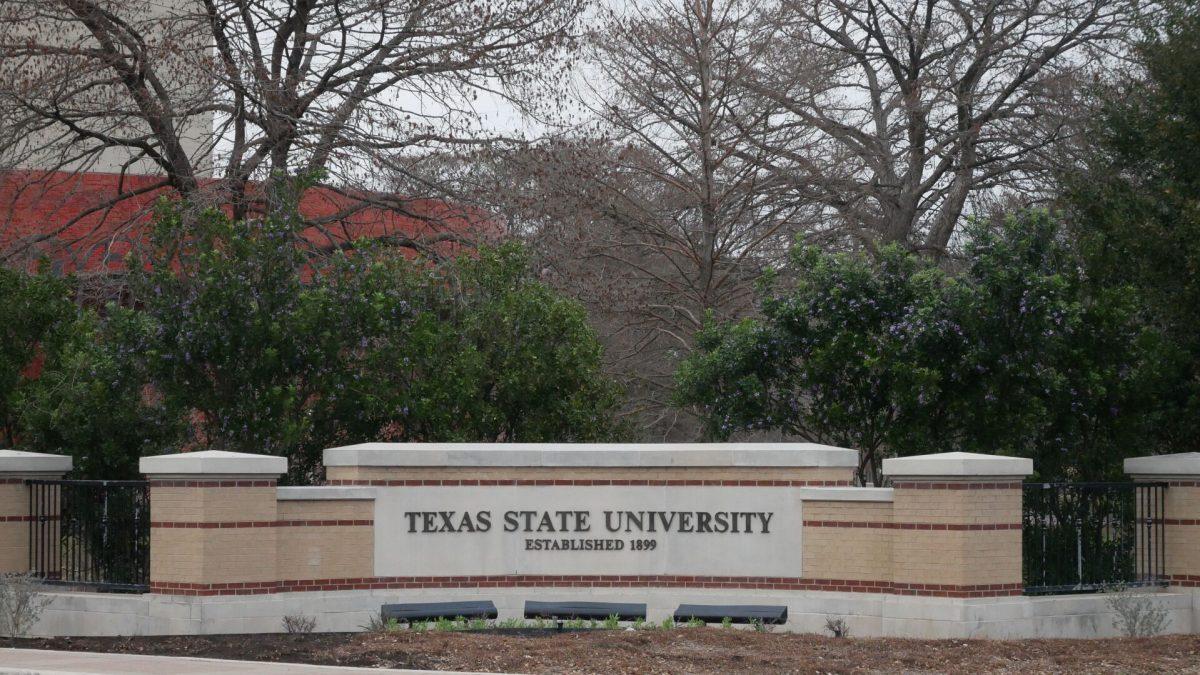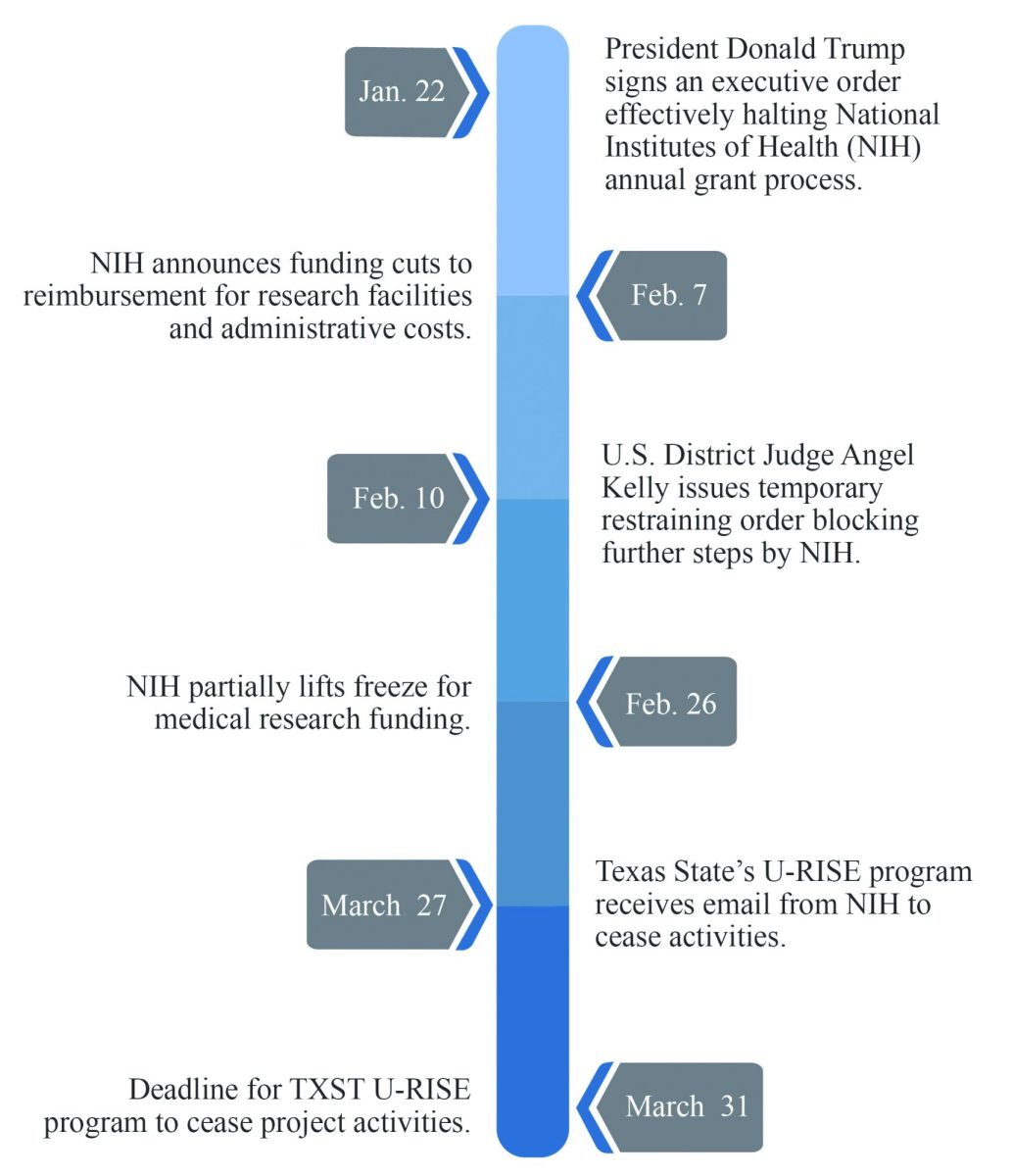As spring graduation looms over Texas State, a stark contrast emerges: while many students prepare for the milestone, the graduation rates of Black students are disproportionately lower than their peers.
In 2010, Texas State attained Hispanic-Serving Institution (HSI) status with Hispanic students comprising at least 25% of its population. Fast forward to fall 2023, the university has an increased diverse landscape, with Hispanic students at 40.7%. While their graduation rate stood at 52.97% in 2022, Black students, constituting 10.77% of the population, had the lowest graduation among all students with a rate of 48.82%.
Terrence McClain, director of the Student Success Center, said there is a disconnect among Black students within the community, contributing to increased dropout rates.
“The population of the Black student community is so small compared to the larger community that it is easy to feel invisible… it makes it harder to make connections and therefore they end up missing out on a lot of resources that can help them succeed,” McClain said.
Treasurer of Texas State’s Black Women United and Black Student Alliance Kierra Ward, a computer information systems senior, said she has yet to have any Black or female professors.
Ward said this lack of representation in the university’s faculty is disheartening because Black students are not able to see role models who look like them for guidance.
“If I had a professor who was a Black woman, or just if I had a professor who was a woman that would have helped me way more than any of my other professors… that is very beneficial for people who don’t think college is for them; seeing themselves in their professors,” Ward said.
As of fall 2023, Texas State has zero Black faculty in the computer science department and 270 Black faculty members in total, which is almost ten times less than white faculty at 2,900.
Associate Vice President for the Division of Student Success Michael Preston sees a hindrance in graduation among Black male students specifically. A reason for the disparity is male students face issues with socializing with the campus community, according to Preston.
“Another thing is [with] male students when they get to college, in some cases, lag behind their female counterparts in some of the preparation pre-college so they might struggle early on and that is then reflected in graduation rates,” Preston said.
President of Black Men United, Jaden Campbell, said Senate Bill 17 (SB 17) is another reason Black students are struggling to find a community at Texas State and he believes this could lead to more students dropping out.
SB 17 disbanded Diversity, Equity and Inclusion (DEI) offices at public universities like Texas State’s Division of Inclusive Excellence (IE) which the university discontinued in August 2023.
“Specifically, there used to be a diversity lounge on the second floor of LBJ that is now gone, and that used to be a place we felt at home and while we can still hold events there, it does not feel like it’s ours anymore,” Campbell said. “A lot of Black students I know use places like that for support so not having that can really affect their path to graduation here.”
McClain said SB 17 not only impacts Black student organizations but also limits the ability of faculty to spearhead initiatives aimed at supporting minority students.
“The hard part for some is justifying how to support one group without supporting another in the same way but sometimes it comes down to some groups suffer more than other groups, and that is what needs to be recognized to address [the low graduation rates],” McClain said.
McClain said both Success Center programs and professors’ efforts are vital in supporting Black students. He emphasized the importance of simple gestures, like engaging with students who may feel overlooked, which can be the difference in making a student feel welcomed.
In hopes of addressing the needs of students with discrepancies in their academics to potentially address graduation rates, the university is launching a program called Navigate Texas State for incoming freshmen in time for New Student Orientation on June 4 and current students in the fall.
“With Navigate Texas State we’ll be able to do a lot of inquiry into seeing which students early on in their academic plan are either taking too few hours, not getting to class as often or any early on-set issues for all students,” Preston said. “Because really our four-year insecure graduation rates need improving across the board.”






















